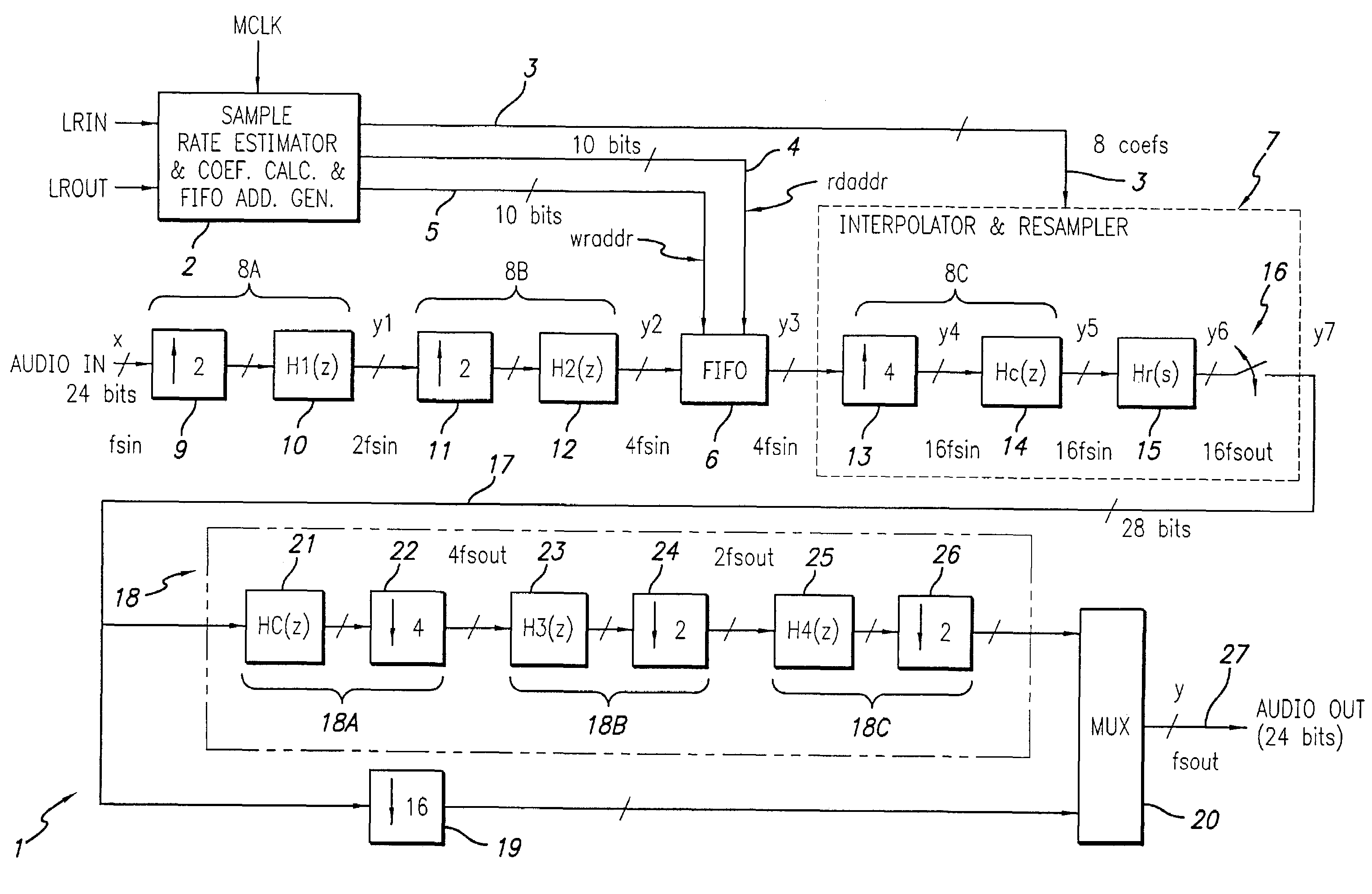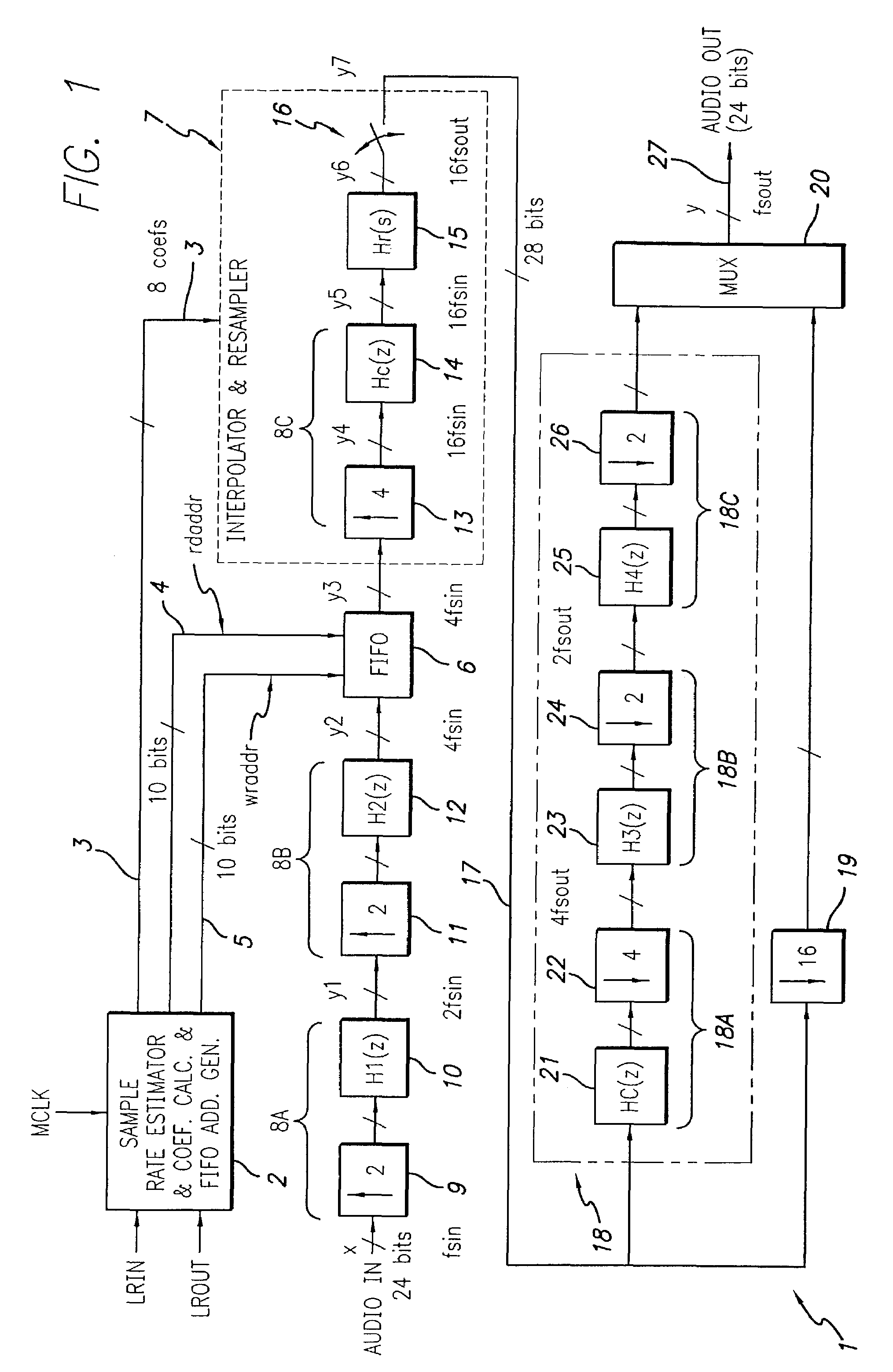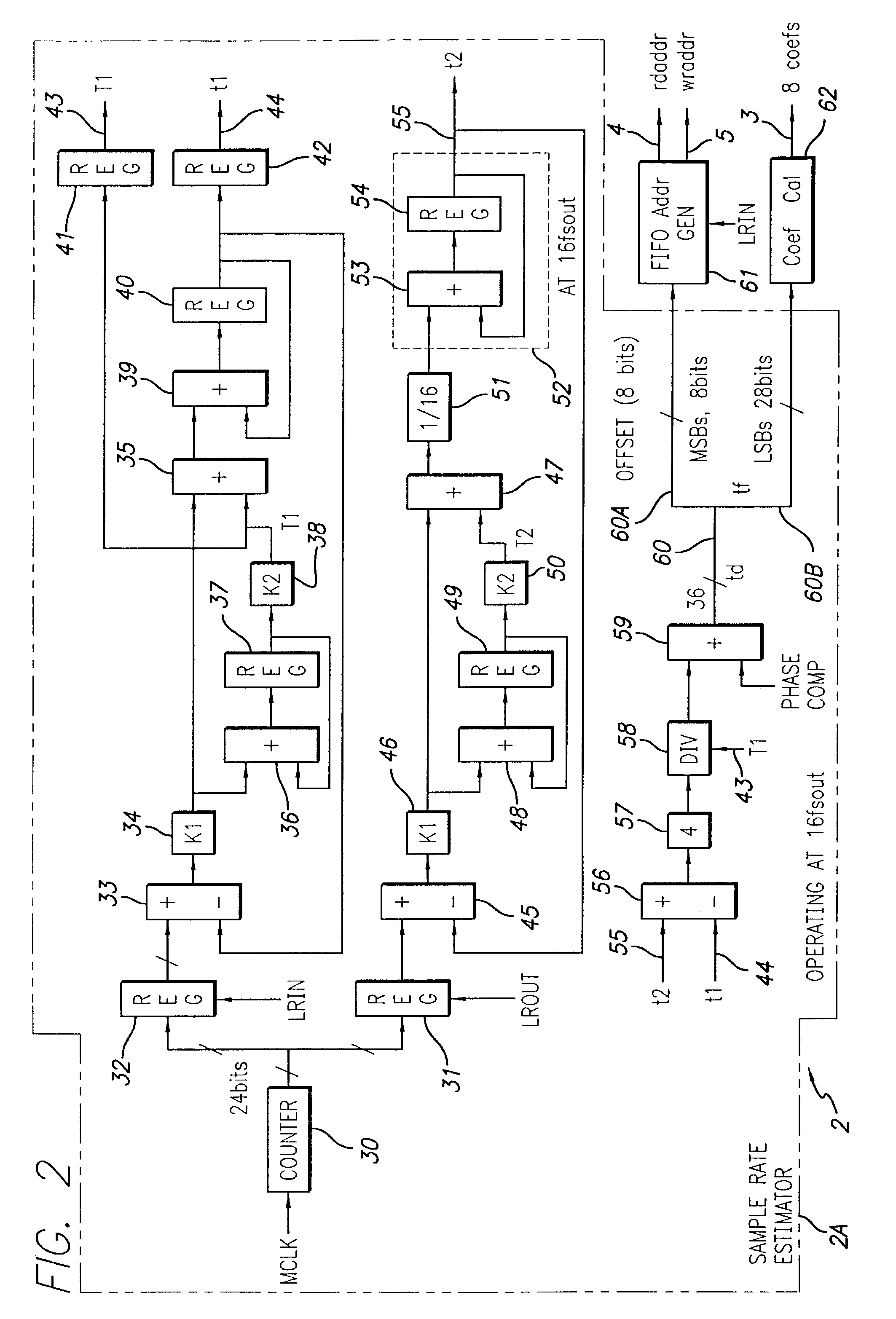Asynchronous sample rate converter and method
a sample rate converter and sample rate technology, applied in the field of sample rate converters, can solve the problems of undesirable/annoying sample dropping or sample repeating, high undesirable audible “popping or clicking” sound, and the use of analog phase locked loop circuits usually requires substantially more silicon chip area
- Summary
- Abstract
- Description
- Claims
- Application Information
AI Technical Summary
Benefits of technology
Problems solved by technology
Method used
Image
Examples
Embodiment Construction
[0036]The described embodiment of the asynchronous sample rate converter 1 of the present invention as shown in the drawings is designed to operate within a range of the ratio between the input sample rate the and output sample rate from 1:16 to 16:1. Thus, asynchronous sample rate converter 1 has the capability of converting between any sample rates of Audio In (also designated by “x”) and Audio Out (also designated by “y”) in the range of, for example, 12 kHz to 192 kHz. Audio In, also designated by “x” in FIG. 1, is an already-digitized 24-bit version of an analog signal, and has a sample rate of fsin. Greatly simplified, an asynchronous sample rate converter can be considered to include only two main sections. The first section is to convert the signal from discrete-time to continuous-time, which is what is accomplished from the discrete-time signal Audio In to continuous-time signal y6 in FIG. 1. The second section just re-samples (but does not hold) the continuous-time signal ...
PUM
 Login to View More
Login to View More Abstract
Description
Claims
Application Information
 Login to View More
Login to View More - R&D
- Intellectual Property
- Life Sciences
- Materials
- Tech Scout
- Unparalleled Data Quality
- Higher Quality Content
- 60% Fewer Hallucinations
Browse by: Latest US Patents, China's latest patents, Technical Efficacy Thesaurus, Application Domain, Technology Topic, Popular Technical Reports.
© 2025 PatSnap. All rights reserved.Legal|Privacy policy|Modern Slavery Act Transparency Statement|Sitemap|About US| Contact US: help@patsnap.com



